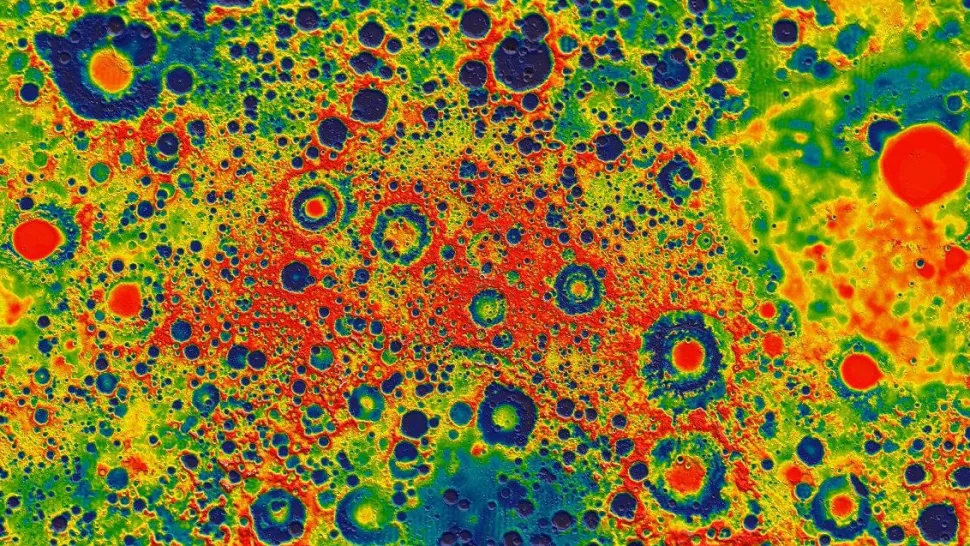Scientists have discovered an anomalous blob of heat on the back side of the moon. A new study has identified a curious source for this mysterious hotspot: It’s likely from the natural radiation of a massive buried granite deposit, which is typically only found on Earth.

The researchers believe that a dormant volcano on the moon that has been inactive for 3.5 billion years may be the origin of this immense granite formation.
According to Matt Siegler, the lead study author from the Planetary Science Institute in Tucson, Arizona, granite formations on the Moon are much more Earth-like than previously thought, despite the lack of water and plate tectonics that are present on Earth (as stated in a press release).
Siegler and Rita Economos from Southern Methodist University found evidence of heat beneath the lunar surface by utilizing microwaves in a new way to measure temperatures by Chinese orbiters Chang’E 1 and 2. Additionally, data from NASA’s Lunar Prospector and Lunar Reconnaissance Orbiters were used in their research.
Researchers discovered an area of around 50 km in diameter where the temperature was approximately 10°C higher than its environment. This area is positioned beneath a circular region of the surface which is abundant in silicon and is believed to be the location of an extinct volcano that last erupted 3.5 billion years ago. It is suggested that the magma left behind by the volcanic activity is still present and producing radiation beneath the surface.
Economos noted in the statement that a 50 km-wide batholith was discovered. This type of volcanic rock is formed when molten lava rises but does not reach the surface. Two comparable granite rocks, El Capitan and Half Dome, located in Yosemite, California, have made their way to the top.
In their report published in the journal Nature on July 5, the researchers revealed their initial discoveries, and further information was given at the Goldschmidt Conference on geochemistry in Lyon, France, on July 12.
In a statement, Stephen M. Elardo, a geochemist at the University of Florida who had no involvement in the study, called the findings “incredibly interesting.” Elardo went on to note that granite is ubiquitous on Earth, but not on other planets in the solar system.
He commented that granite countertops are ubiquitous in kitchens, but the difficulty in forming it without the presence of water and the process of plate tectonics is why it is rarely seen on other planets. Therefore, if the research from Siegler and their team is proven correct, it could have a huge influence on our understanding of the interior of other rocky bodies in the Solar System and the possibility in their future uses.
The use of renewable energy sources is on the rise, with more and more people turning to this type of energy as a viable alternative to traditional sources. This shift is due to the increased awareness of the environmental consequences of non-renewable energy sources, as well as the economic benefits of using renewable energy. As a result, more governments and businesses are investing in renewable energy sources, such as wind and solar power, to reduce their carbon footprint and contribute to a healthier planet.




